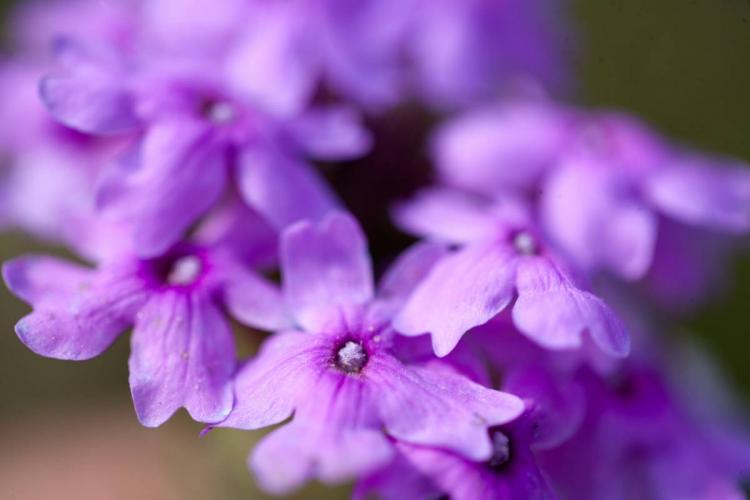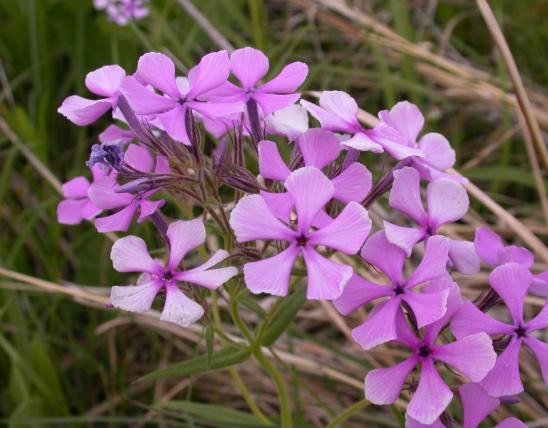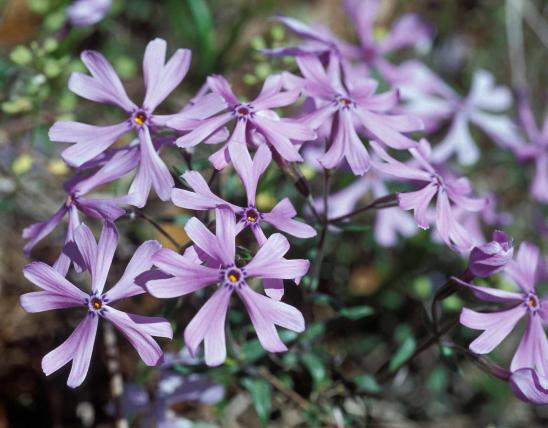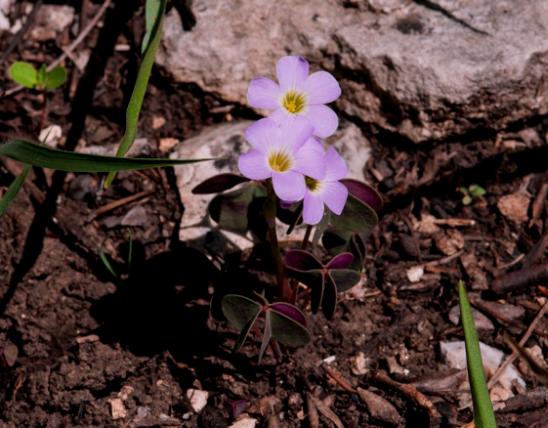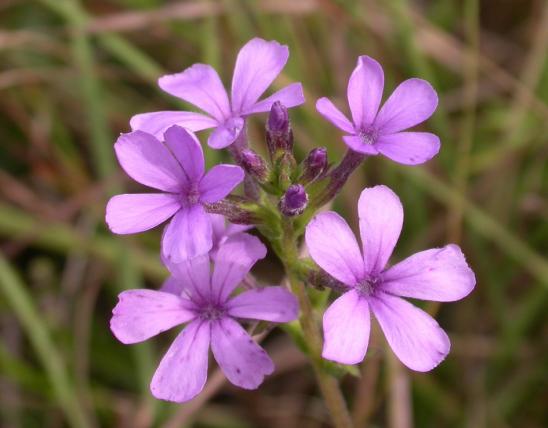
Rose verbena is a low, spreading herbaceous perennial with hairy stems that take root where they touch the ground. The flowers are in rounded or flat-topped, terminal clusters, tubular, with 5 lobes. Rose verbena makes spectacular displays on dry, rocky hillsides. Color varies from true pink to magenta to rose-purple, probably depending on soil. Blooms March–November. Leaves are variable, opposite, on petioles, more or less 3-divided with toothed lobes, to 3 inches long.
Height: usually to about 1 foot.
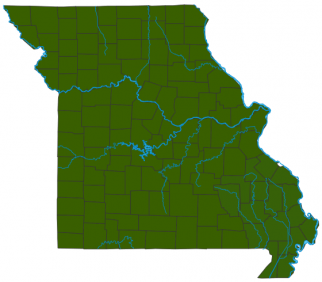
Statewide, but especially in central and southern Missouri.
Habitat and Conservation
Rose verbena occurs on prairies, fields, pastures, dry hillsides, waste places, glades, borders of woods, and rights-of-way. Often cultivated, it does best in fairly sunny locations and tolerates dry to medium-moist conditions.
Status
Long considered a member of the genus Verbena, this species is currently placed into the genus Glandularia based on a number of factors, including chromosome data that were unavailable to botanists in previous decades. Because it was so long known as Verbena canadensis, it still appears under that name in many guidebooks and manuals.
Human Connections
This native plant is great for rock gardens, edging, and in containers, where it forms masses and spreads as a ground cover. Special cultivars, with variations of flower color and plant compactness, are available at garden stores. Look for hardy, wild-type specimens at reputable native plant nurseries. Please do not dig wildflowers from natural places.
These and other gorgeous spring wildflowers decorate our state and contribute to tourism revenue. They also contribute to our sense of well-being as our surroundings gain life and color after the long, drab months of winter.
Ecosystem Connections
The long-tubed flowers are visited by insects with long tongues, such as butterflies, skippers, and long-tongued bees such as bumble bees, mason bees, and leaf-cutting bees. Insects with shorter mouthparts (such as andrenid bees and sweat bees) would have trouble drinking nectar from the flowers.
Although some types of aphids are known to suck sap from the plant, mammals generally do not eat the foliage due to its bitterness.
The seeds may be consumed by mice and birds. Seeds that are carried away but not eaten might be dispersed this way. The plant, however, can still spread vegetatively by rooting where the stems touch the ground.

